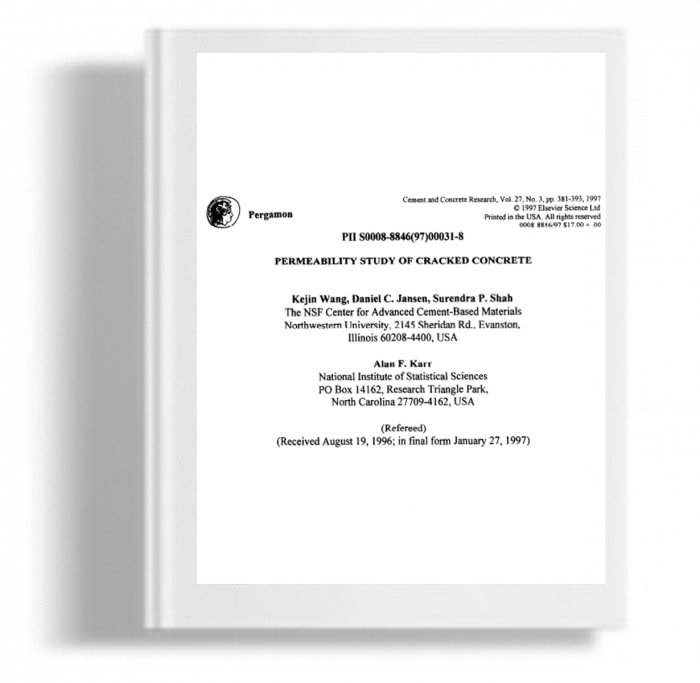Kami menggunakan cookies untuk membuat pengalaman Anda lebih baik. Untuk mematuhi petunjuk e-Pribadi yang baru, kami perlu meminta persetujuan Anda untuk menyetel cookies. Pelajari lebih lanjut .
Permeability study of Cracked concrete
The present work studies the relationship between crack characteristics and concrete permeability. In this study, feedback controlled splitting tests are introduced to generate crack width controlled concrete specimens. Sequential crack patterns with different crack widths are viewed under a microscope. The permeability of cracked concrete is evaluated by water permeability tests. The preliminary results indicate that crack opening generally accelerate water flow rate in concrete. When a specimen is loaded to have a crack opening displacement smaller than 50 microns prior to unloading, the crack opening has little effect on concrete permeability. When the crack opening displacement increases from 50 microns to about 200 microns, concrete permeability increases rapidly.
- Baca | Unduh PDF
- Permeability study of Cracked concrete
The present work studies the relationship between crack characteristics and concrete permeability. In this study, feedback controlled splitting tests are introduced to generate crack width controlled concrete specimens. Sequential crack patterns with different crack widths are viewed under a microscope. The permeability of cracked concrete is evaluated by water permeability tests. The preliminary results indicate that crack opening generally accelerate water flow rate in concrete. When a specimen is loaded to have a crack opening displacement smaller than 50 microns prior to unloading, the crack opening has little effect on concrete permeability. When the crack opening displacement increases from 50 microns to about 200 microns, concrete permeability increases rapidly.

